Idea by
Marianna Chrapana, Virginia Giagkou
Call for ideas 2017
Embodied Spaces: On the Edge of Movement
Embodied Spaces: On the Edge of Movement
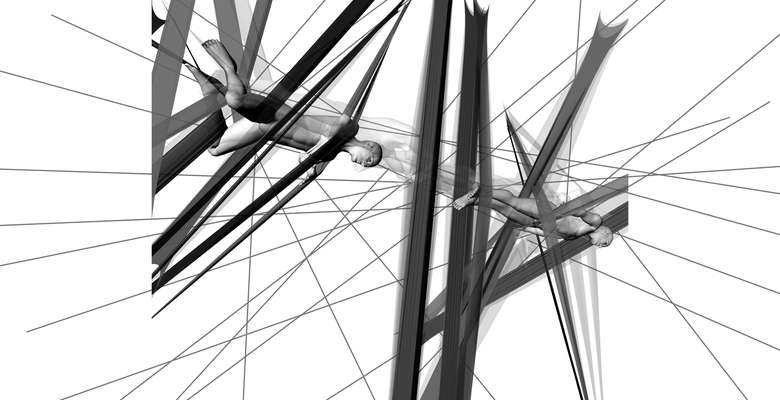
In recent years architecture has neglected the body movement and its relation to space.The architectural and body expressions have been standardized.Although architecture designs for the body does not take into account its movement and interaction with space.Considering these issues, created the need to experiment anew on the relationship between space and movement. Consequently this project focuses both on the analysis of the constituent elements of the body movement and the generation of space according to them. Four movements were selected as the case studies: the climber, the tightrope walker, the diver and the aerialist. The experimental process was common to all four cases. At first, we analyzed each movement through chronophotographies, focusing on their qualitative data. Then through an animation program we produced three-dimensional snapshots of the movements. Finally by introducing different spatial elements we studied the configuration of space according to the movement.
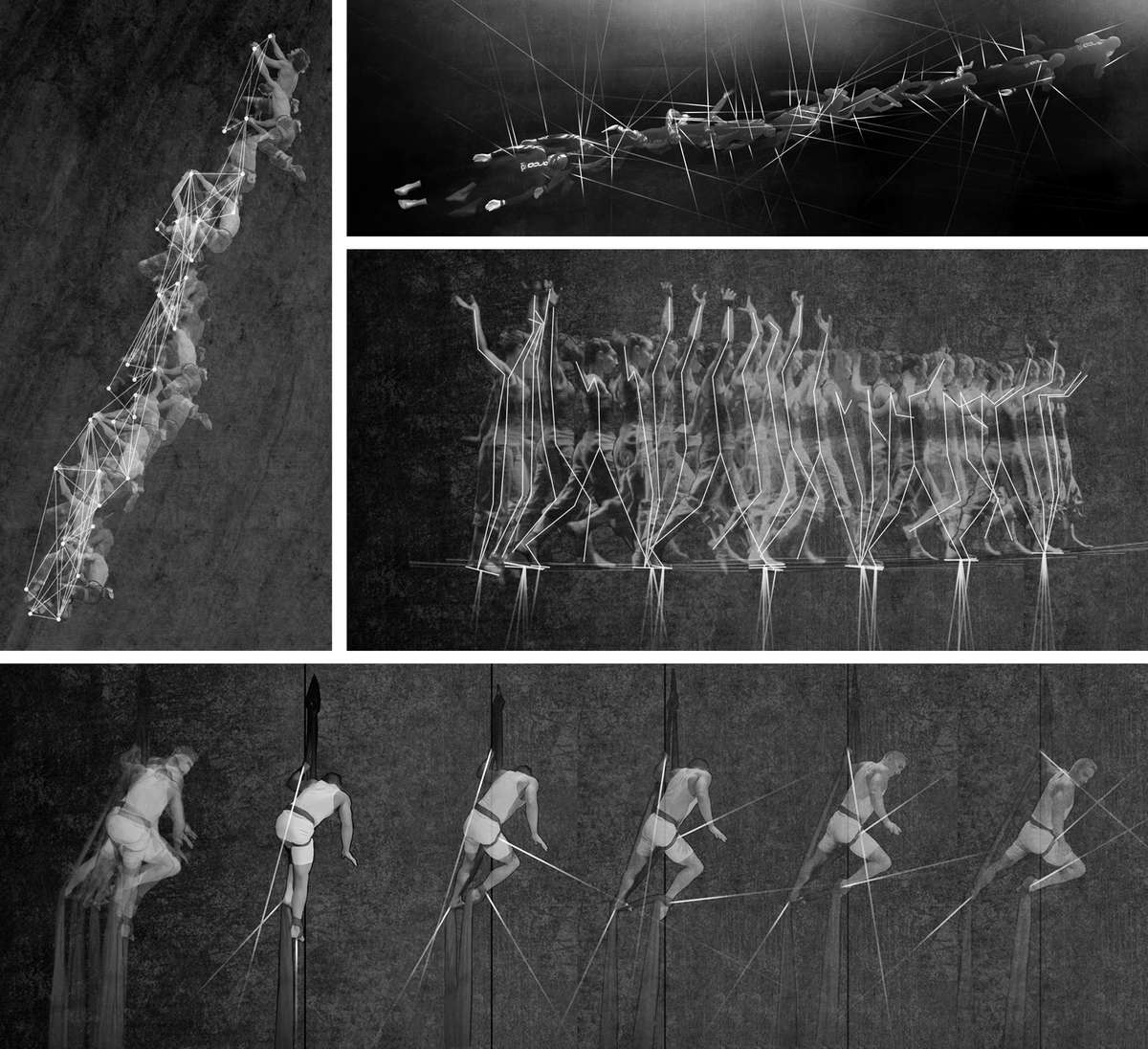
Experimental process. The first step of the analysis. The study of the selected movements through chronophotographies. Frame analysis and identification of the structural and constituent elements of each movement. 1. Climber: the body anchors. 2. Tight-rope walker: the forces of the moving body applied to the rope. 3. Diver: the forces applied to the body due to the water pressure_the forces applied from the moving body to the water. 4. Aerialist: the forces applied to the silks during movement.
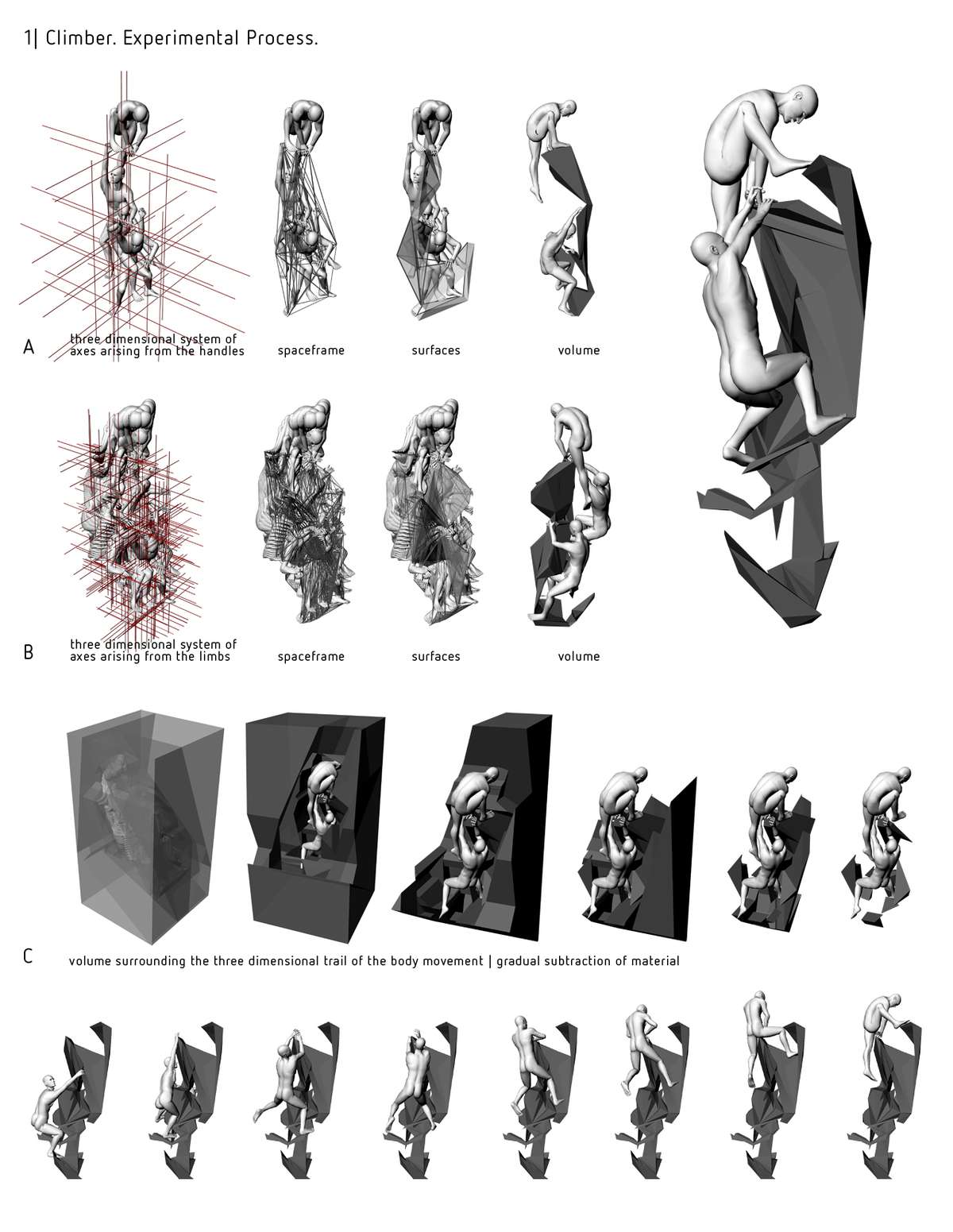
Case study no.1: the climber. Generation of the three-dimensional trace of the movement. Identification and recording of the body anchorpoints. Generation of space.
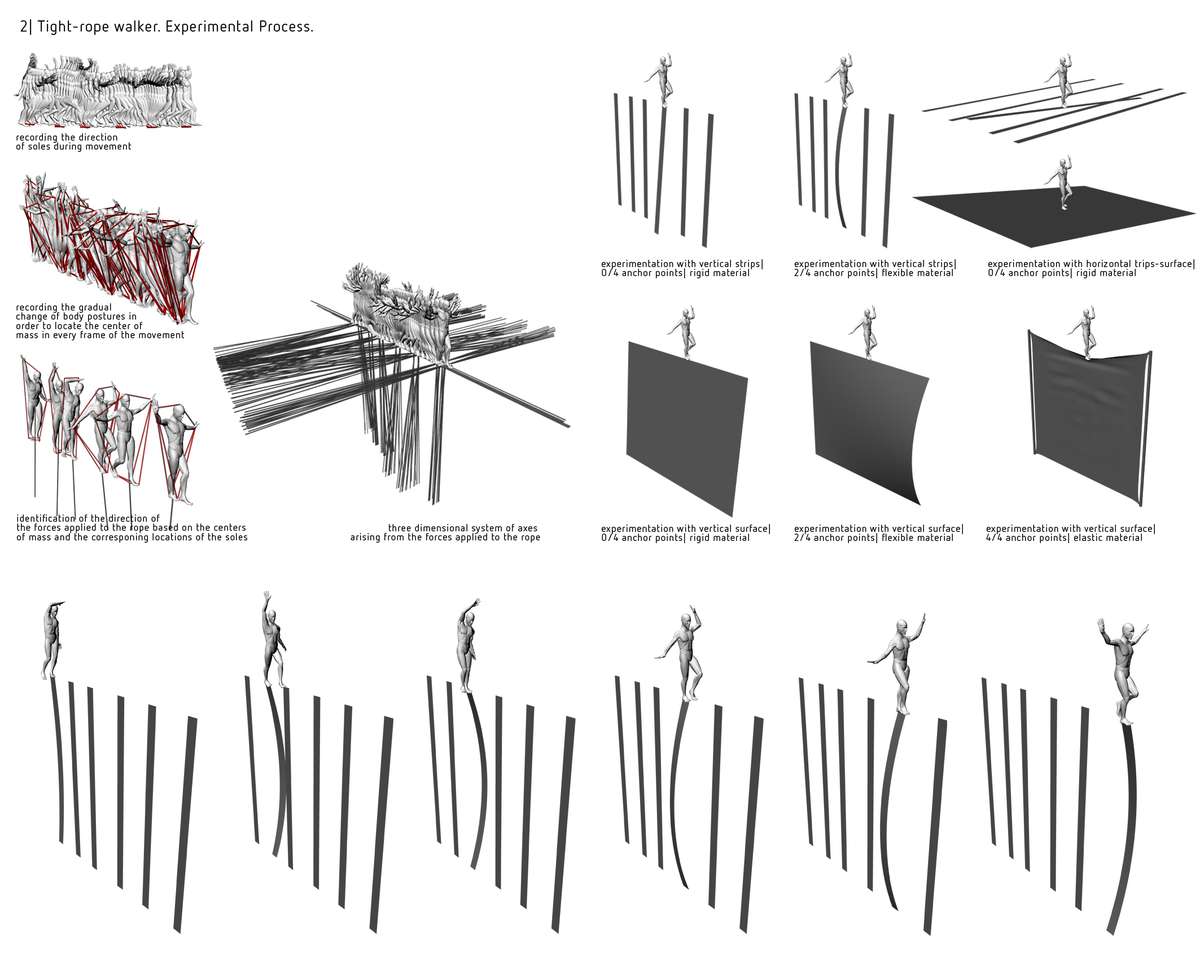
Case study no.2: the tight-rope walker. Generation of the three-dimensional trace of the movement. Identification of the forces applied to the rope based on the direction of the soles and the center of mass. Generation of space. Experimentation with different spatial elements and materialities.
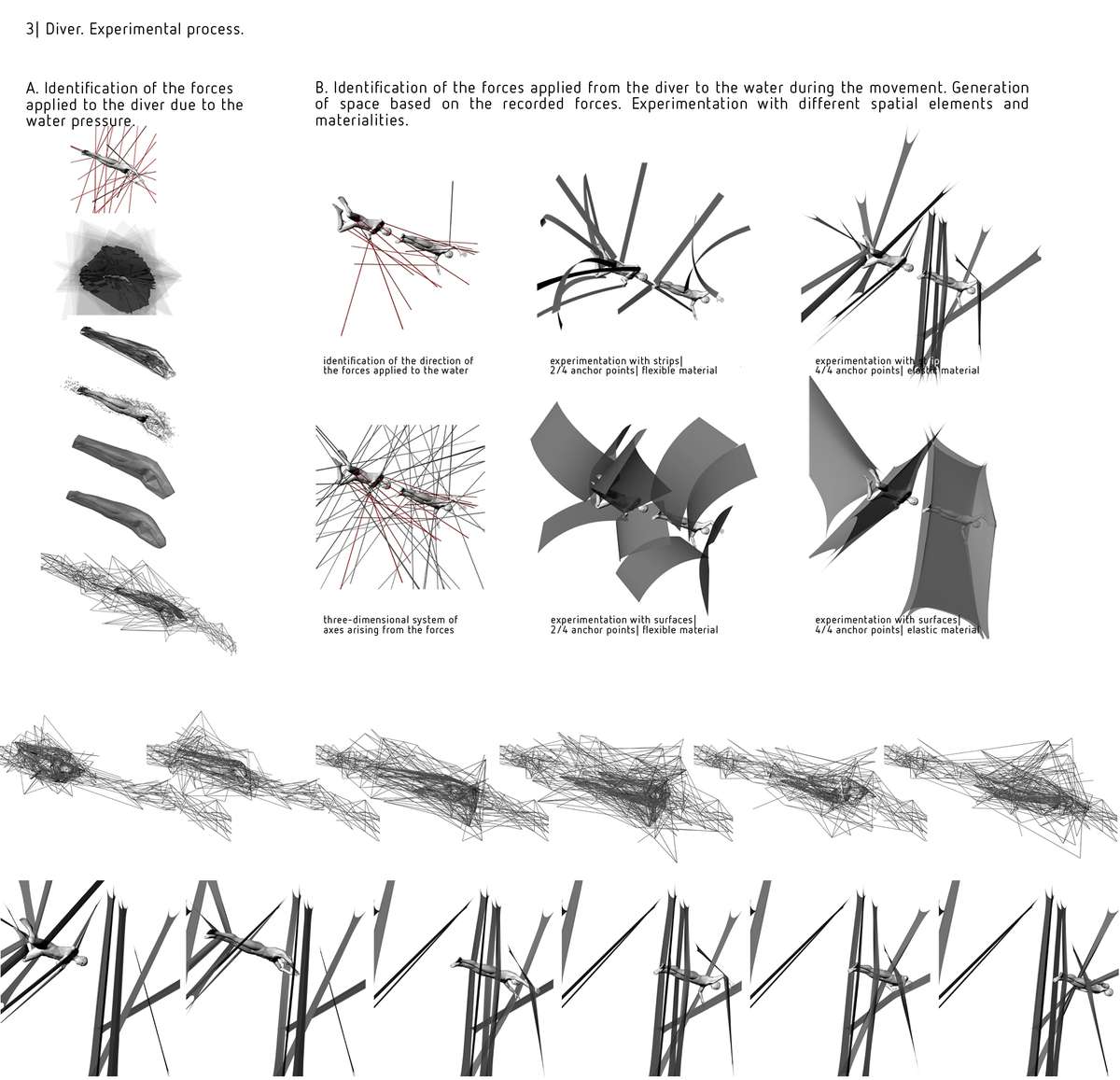
Case study no.3: the diver. Generation of the three-dimensional trace of the movement. Identification of the forces applied to the body due to the water pressure_ Identification of the forces applied from the moving body to the water. Generation of space. Experimentation with different spatial elements and materialities.
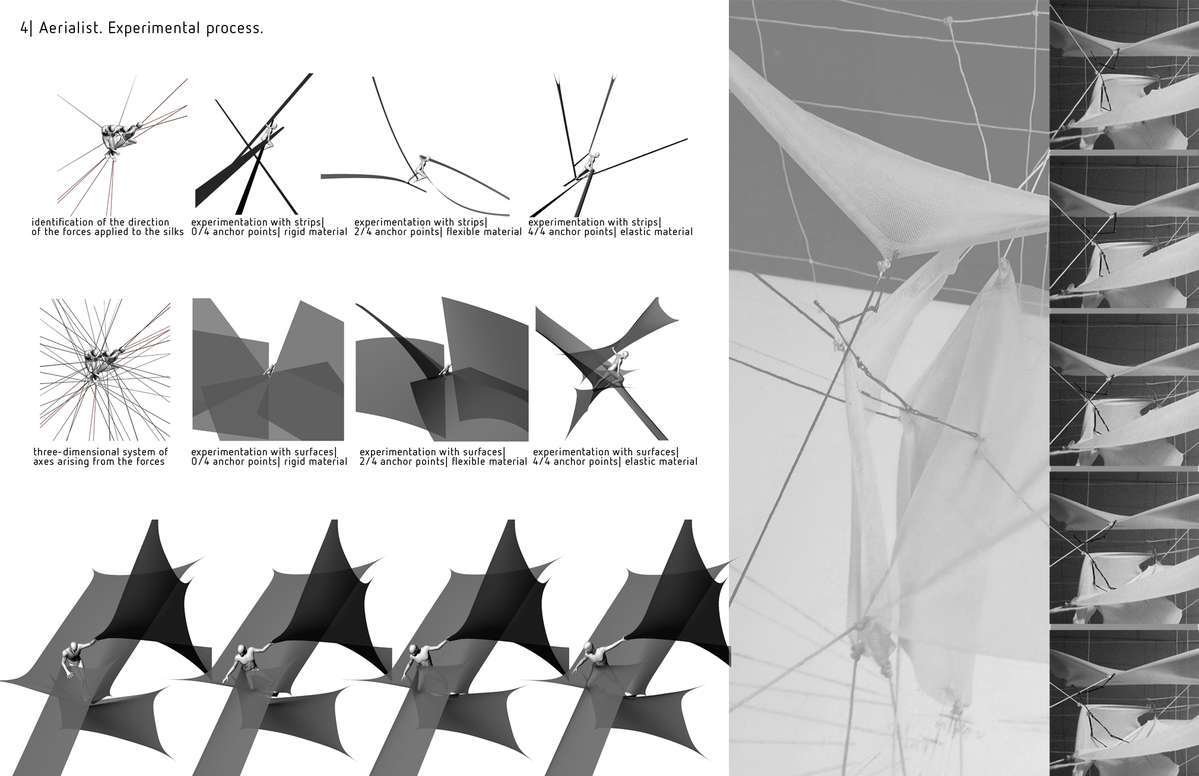
Case study no.4: the aerialist. Generation of the three-dimensional trace of the movement. Identification of the forces applied to the silks during the movement. Generation of space. Experimentation with different spatial elements and materialities. Architectural model generating the frames of the movement and the respective spatial configurations.
Embodied Spaces: On the Edge of Movement
Embodied Spaces: On the Edge of Movement

In recent years architecture has neglected the body movement and its relation to space.The architectural and body expressions have been standardized.Although architecture designs for the body does not take into account its movement and interaction with space.Considering these issues, created the need to experiment anew on the relationship between space and movement. Consequently this project focuses both on the analysis of the constituent elements of the body movement and the generation of space according to them. Four movements were selected as the case studies: the climber, the tightrope walker, the diver and the aerialist. The experimental process was common to all four cases. At first, we analyzed each movement through chronophotographies, focusing on their qualitative data. Then through an animation program we produced three-dimensional snapshots of the movements. Finally by introducing different spatial elements we studied the configuration of space according to the movement.
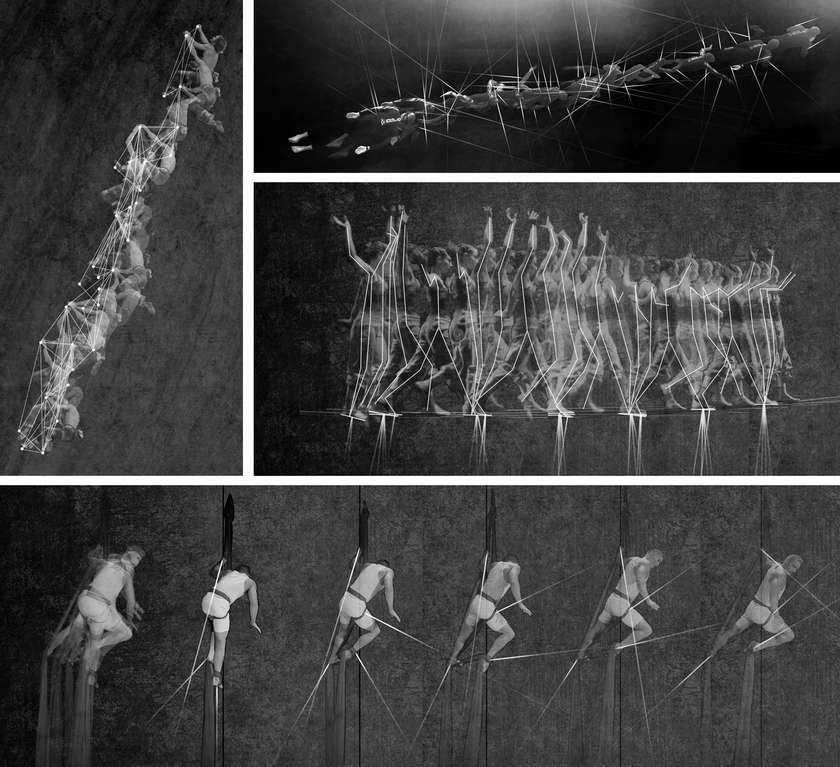
Experimental process. The first step of the analysis. The study of the selected movements through chronophotographies. Frame analysis and identification of the structural and constituent elements of each movement. 1. Climber: the body anchors. 2. Tight-rope walker: the forces of the moving body applied to the rope. 3. Diver: the forces applied to the body due to the water pressure_the forces applied from the moving body to the water. 4. Aerialist: the forces applied to the silks during movement.
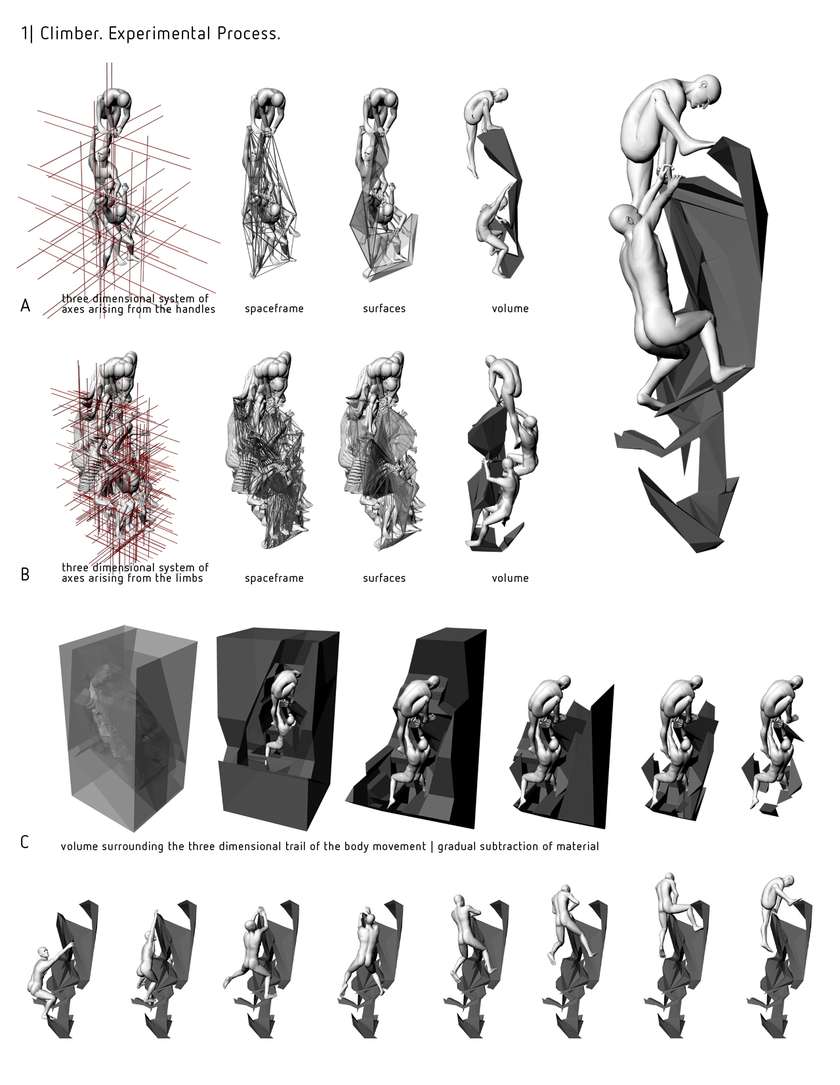
Case study no.1: the climber. Generation of the three-dimensional trace of the movement. Identification and recording of the body anchorpoints. Generation of space.
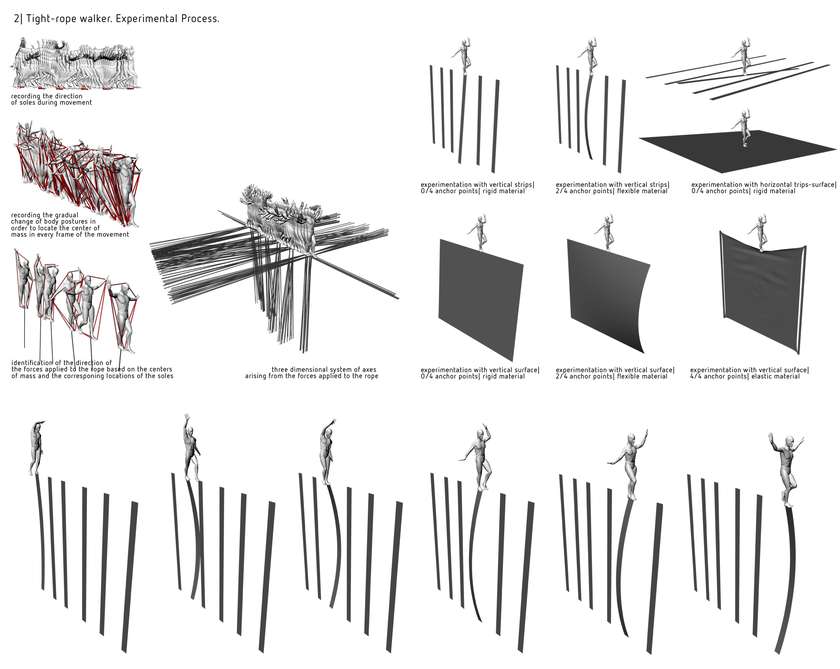
Case study no.2: the tight-rope walker. Generation of the three-dimensional trace of the movement. Identification of the forces applied to the rope based on the direction of the soles and the center of mass. Generation of space. Experimentation with different spatial elements and materialities.
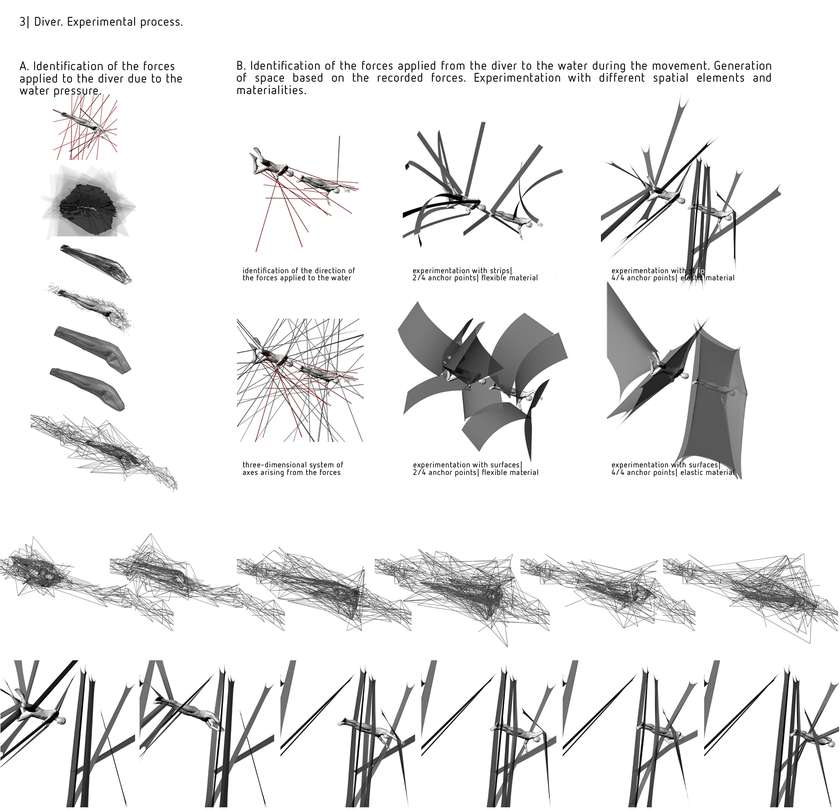
Case study no.3: the diver. Generation of the three-dimensional trace of the movement. Identification of the forces applied to the body due to the water pressure_ Identification of the forces applied from the moving body to the water. Generation of space. Experimentation with different spatial elements and materialities.
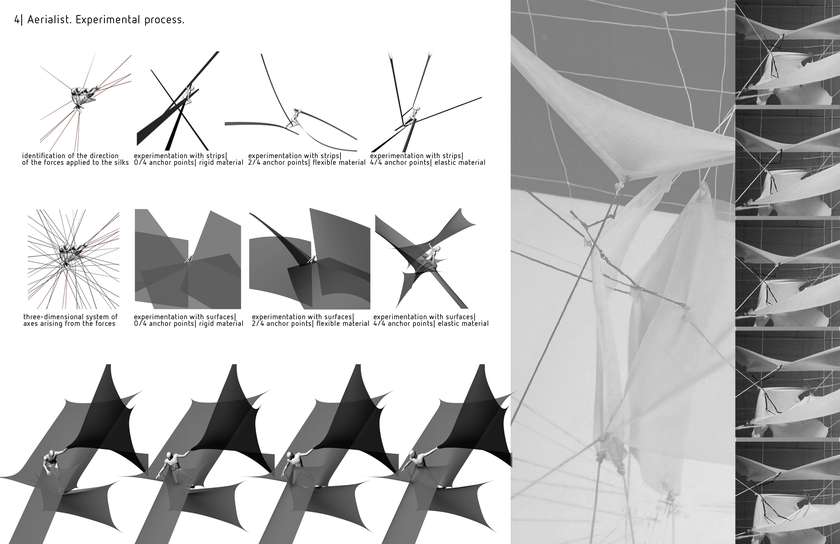
Case study no.4: the aerialist. Generation of the three-dimensional trace of the movement. Identification of the forces applied to the silks during the movement. Generation of space. Experimentation with different spatial elements and materialities. Architectural model generating the frames of the movement and the respective spatial configurations.